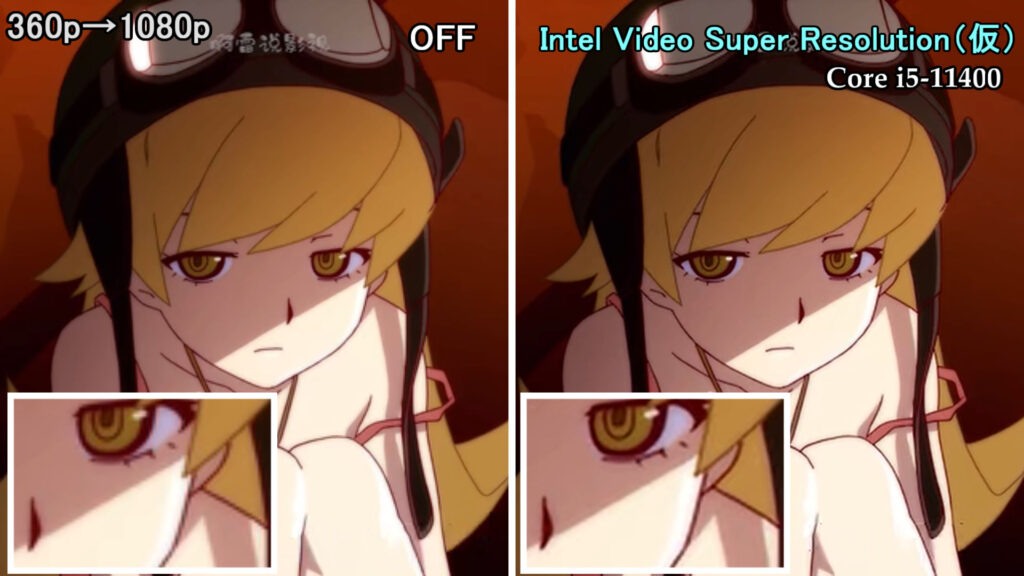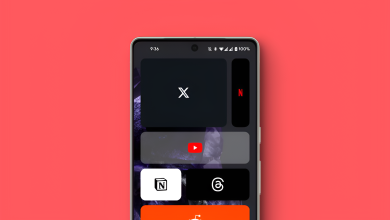[UPDATED] Forget NVIDIA’s RTX ‘VSR’, Intel is Working on its Own VSR for Google Chrome

A few days ago, NVIDIA’s RTX VSR officially went live and the results were quite interesting. However, Intel will soon release its VSR (Video Super Resolution) technology to combat NVIDIA. Meet Intel VSR.
Intel Fires Back With its Own VSR Tech
Videocardz reports that Intel is also prepping a hardware-assisted video upscaler for the Chromium framework. Remember, this is not the first time we’re seeing reports regarding an upscaler from Intel. There were slight glimpses of this tech featured in various developer logs, however, we have actual results to demonstrate how this tech works.
Well, how do you enable it then? Firstly, Videocardz mentions that you will require a 10th Gen Core CPU or newer (of course, with the iGPU). Even then, it is a gamble because Intel has not announced support for this tech yet.
How to Enable Intel VSR
For the brave-hearted, right-click on your Google Chrome shortcut and open Properties. Open the ‘Shortcut‘ tab and in the ‘Target‘ field, paste ‘–enable-features=IntelVpSuperResolution’. Click on ‘Apply‘ and restart Chrome. How do you know if it works? Well, you don’t. The only way is to compare two similar video streams, one with Intel VSR on and the other with Intel VSR off.

Does it Look Good?
Yes, it looks decent, probably on par with NVIDIA’s offering but we are not drawing any conclusions here. Various users managed (via Videocardz) to get this feature up and running and provided us with a few screenshots. Decide for yourself;



To be fair, the quality is seriously impressive. I mean, the first image would be enough to convince many. However, it is too early to judge anything. We should probably wait for a full-fledged comparison against NVIDIA’s VSR.
This technology is not magic and won’t upscale a 144p render to 4K. In fact, it merely removes the artifacts and upscales the resolution slightly. Judging from the second picture showcasing Shinobu from the Monogatari Series: Second Season, we managed to achieve almost similar results, albeit with Bocchi The Rock! (referring to the quality) with RTX VSR.
Microsoft Edge Steps into the Battlefield (Update)
Well, guess what? As an update to this article, Microsoft is also planning to launch its own VSR tech. This feature has been officially announced by Microsoft over at microsoftedgeinsider.
Basically, Microsoft Edge will also enable users to upscale video streams, but this time using Microsoft’s own AI technology. Fun fact, even Microsoft termed it as ‘Video Super Resolution’ making it nearly impossible to distinguish one tech from the other.
As for the requirements, Microsoft states that users need an RTX 20, RTX 30, or an RTX 40 GPU. On the flip side, if you’re more of a team red enthusiast, you must be equipped with an ‘AMD RX 5700 up to the RX 7800‘.
Since the RX 7800 does not exist (as of now), Microsoft most probably wants to say that users should have a GPU in between (inclusive) the RX 5700 and the RX 7900 XTX, due to the required computation power.
- The device has one of the following GPUs: Nvidia RTX 20/30/40 series OR AMD RX5700-RX7800 series GPUs.
- The video is played at less than 720p resolution.
- The device is connected to AC power.
- Both the height and width of the video are greater than 192 pixels.
- The video is not protected with Digital Rights Management technologies like PlayReady or Widevine. Frames from these protected videos are not accessible to the browser for processing.
In addition, beating both NVIDIA and Intel to the punch, Microsoft finally has an indicator to see if VSR is on or not. To indicate whether VSR is on/off, users will see an ‘HD icon‘ in the address bar. In order to turn on MS Edge VSR manually, users are directed to visit ‘edge://flags/#edge-video-super-resolution‘ and enable the feature. Though we had little to no luck in doing so.
Afterthoughts
Since more and more competitors are joining this niche, it will only be more beneficial for consumers. Are you excited by this feature from Intel? Tell us more in the comments below.





